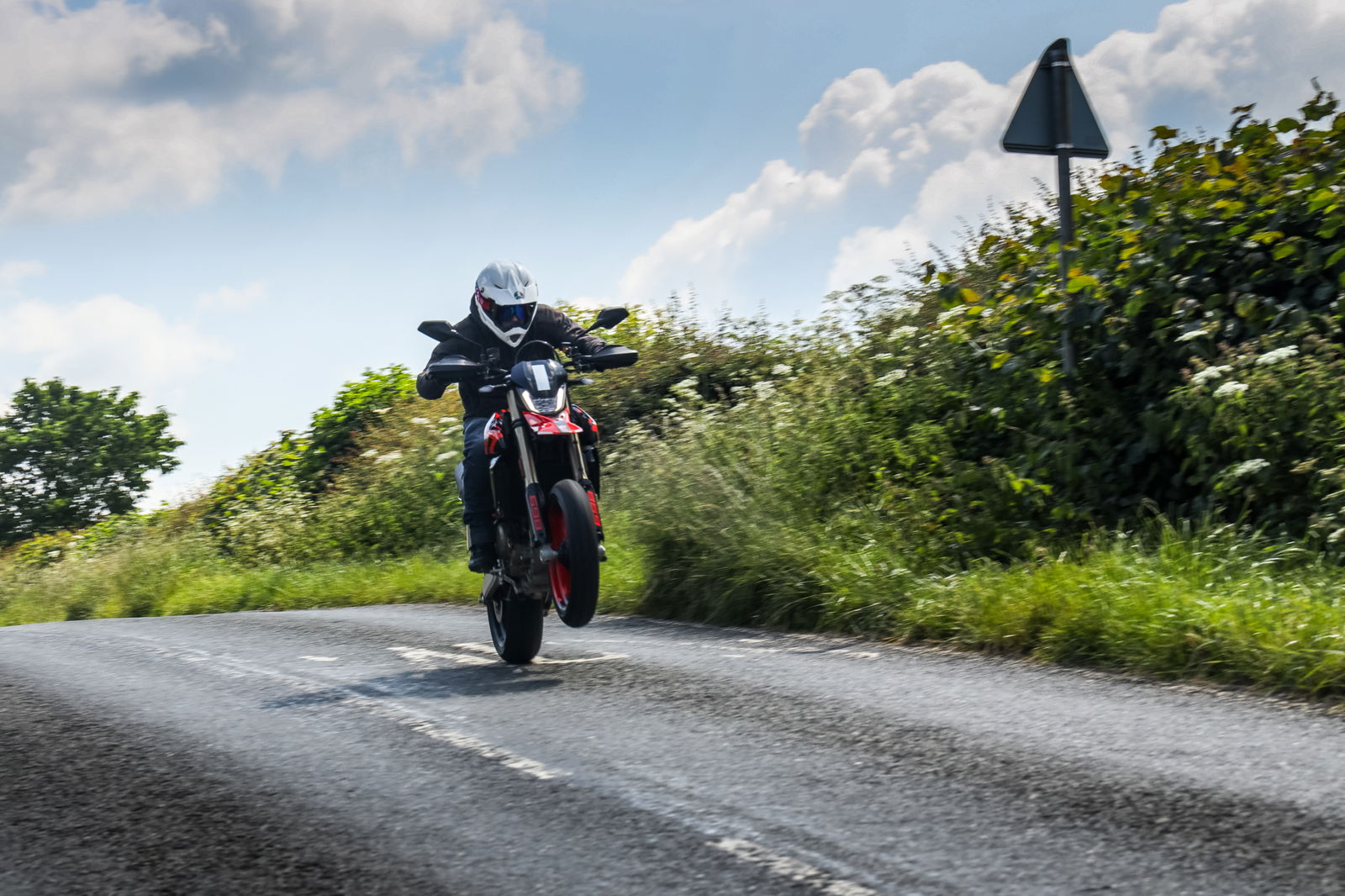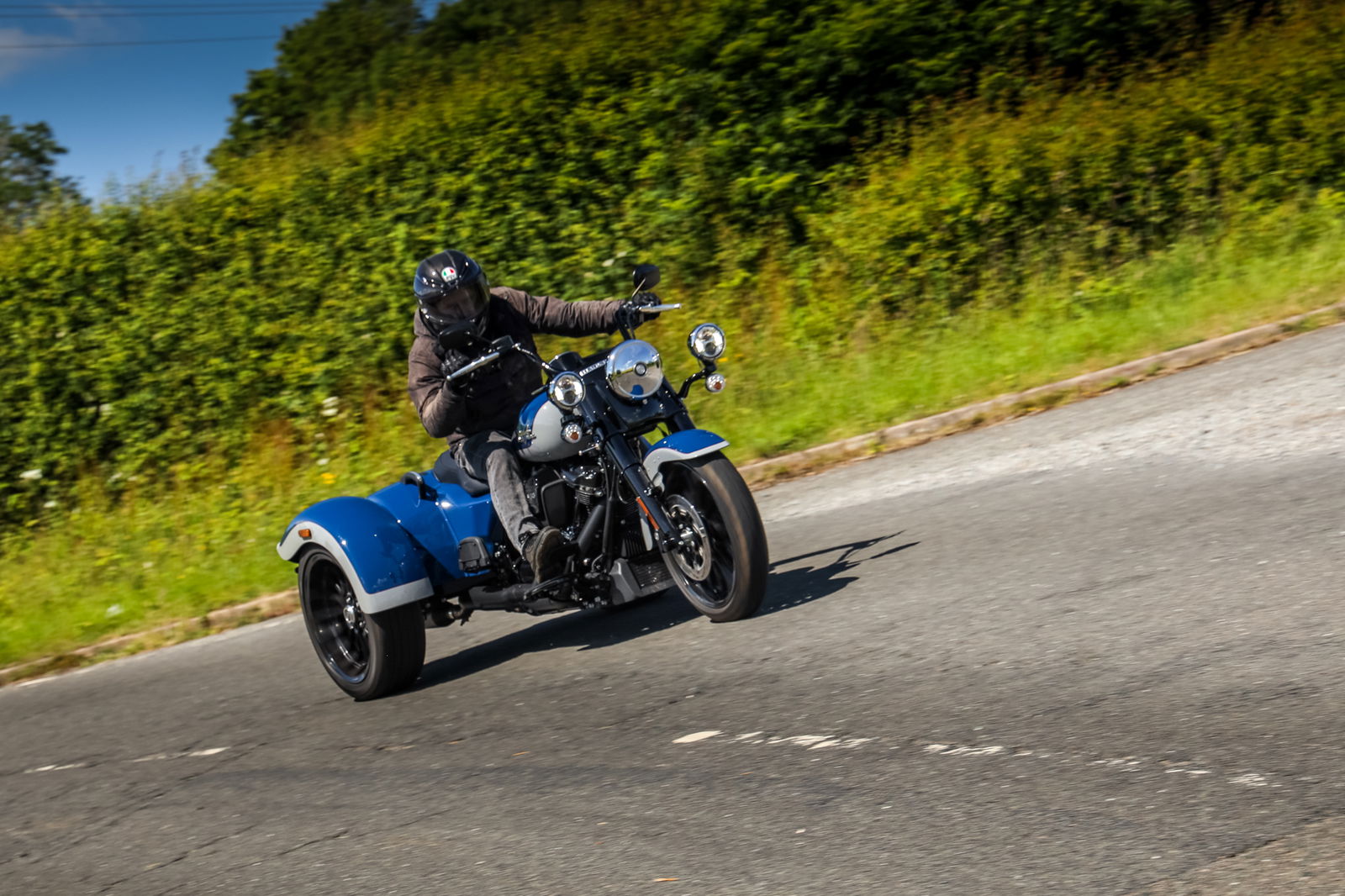KTM 125 Duke Review: The Most Advanced CBT Motorbike?
KTM’s class-leading learner bike is dripping with the kind of technology you normally find on much more expensive machines

Launched in 2010, the KTM 125 Duke quickly became one of the best-selling learner-legal 125cc motorcycles on the market. Its funky, youthful styling and entertaining performance meant the CBT-compatible KTM was an almost instant hit.
And it’s still as popular 14 years later, with hoards of young riders cutting their two-wheeled teeth on the aggressive-looking naked bike. However, like any successful product, it needs to evolve to remain popular, and the latest generation of the 125 Duke might just be the best yet, and one of the best 125cc motorcycles you can buy.
What’s new?
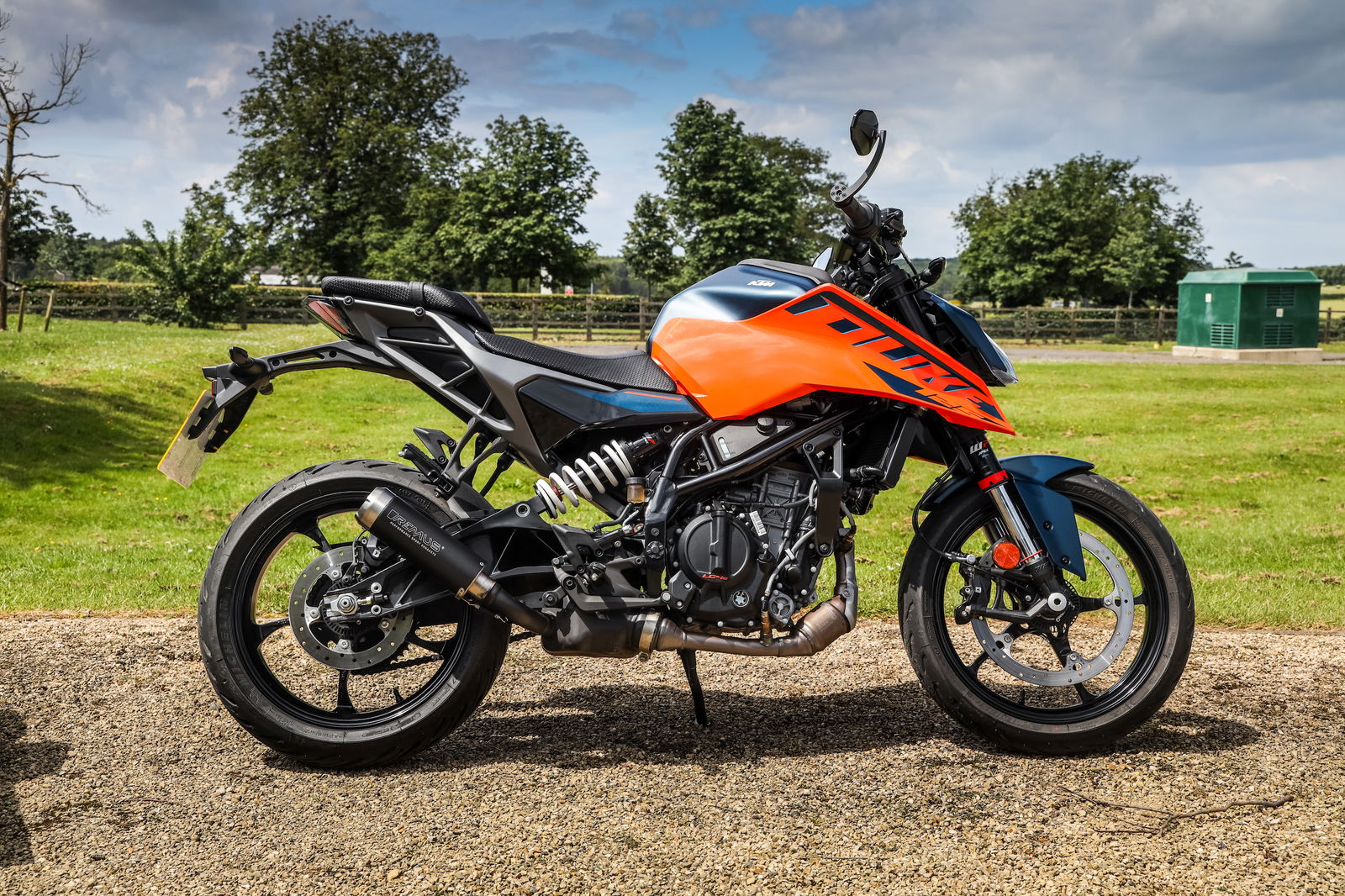
The 2024 bike features a new two-piece frame, with a new steel trellis main frame mated to a pressure die-cast aluminium subframe. The frame enhancements, along with new triple clamps with a revised offset, add to a claimed increase in agility and improved stability. The new bike also features a new banana-shaped swingarm, with the rear shock absorber now mounted off-centre to allow for a new, larger airbox.

The engine of the 125 Duke has also been tweaked, with new optimised cylinder heads and a new gearbox, the former of which allows it to meet Euro5+ emissions standards while still making the maximum permissible 15bhp. On the technology front, the new entry-level Duke gains a slick and easy-to-read five-inch TFT dash with Bluetooth connectivity, a selectable Supermoto mode which switches off the rear ABS, and the option to add an accessory Quickshifter+ (£225.61). Rounding out the updates is the all-new styling which again cements the 125 Duke as the most striking and aggressive-looking 125cc bike on the market.
What’s it like to ride?
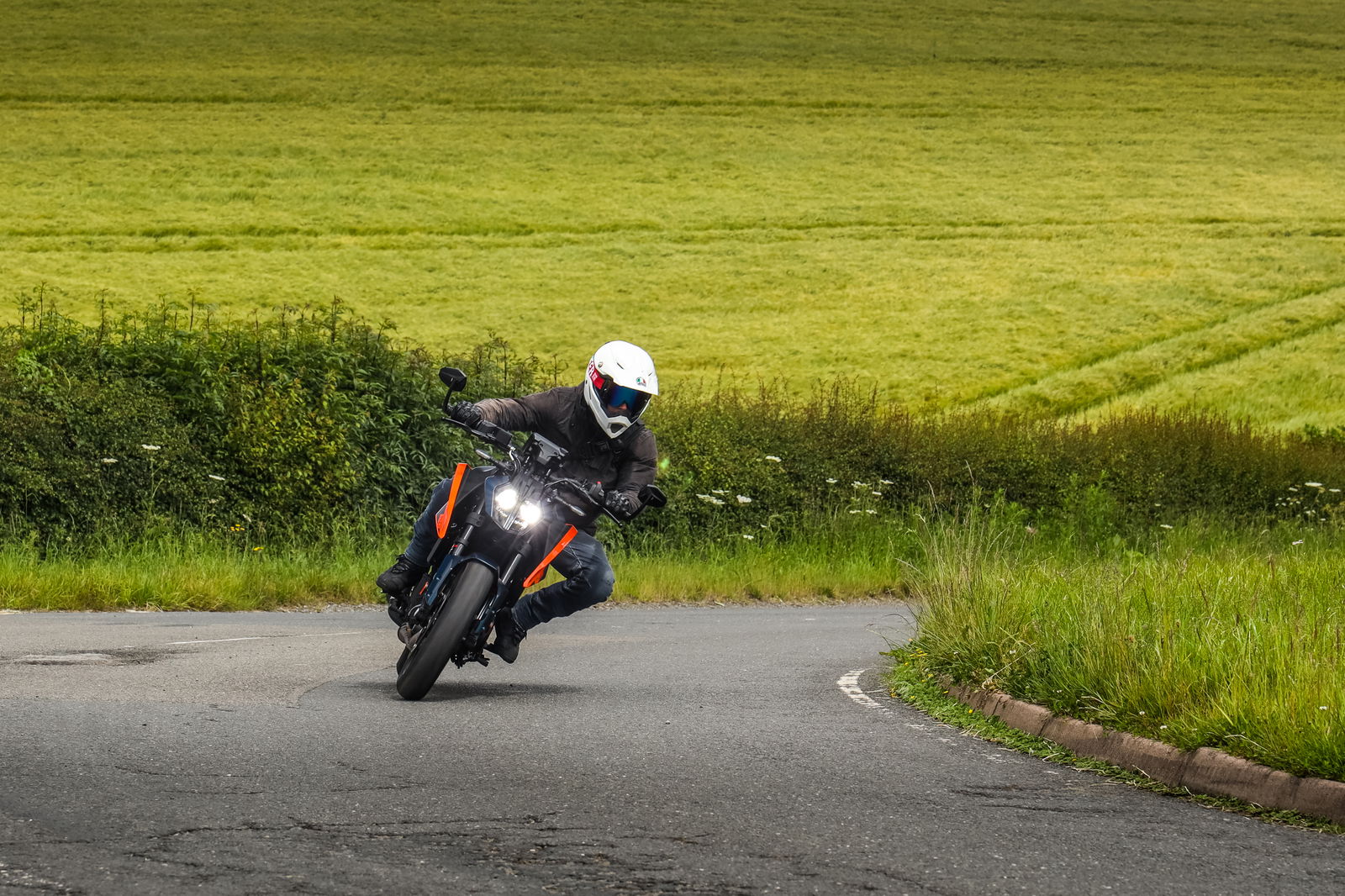
If you were to take the styling of the 125 Duke at face value (pun intended) you’d expect it to be one of the most focused 125cc bikes on the market. And while it’s true that, in the right hands, it can be made to do things that few other CBT bikes can — see the marketing shots with Rok Bagoroš riding for proof — for the rest of us mere mortals it's as simple as taking to two wheels gets.

One of the appealing aspects of the model is its proper big-bike look, and it’s something you notice the very first time you jump on the thing. It’s chunky, with a 43mm fork and wide sturdy-feeling bars, and it’s features like this that mean it doesn’t feel spindly as some 125cc bikes do. Pulling away is the first reminder of the engine’s capacity, but the 15bhp and 8.5lb ft are helped by fairly short gearing and are enough to power you up to 55mph without too much fuss. Find the right road and drop your chin to the tank and you be able to crack at least 75mph — depending on prevailing winds.

Handling-wise, the new Duke is as good as ever, and the WP suspension is a highlight on a bike in this sector. Having such high-spec equipment on a 125 bike really increases the kudos around the model. Out on the road, the new Duke is a featherweight on a twisty road, always seeming to beg for more corner speed and showing good mid-corner poise when presented with lumps and bumps on the apex.
Can I feel the added rigidity and stability that the redesigned frame promised to bring? Probably not. But given that the 125 and 390 Dukes share the same main frame components, those changes might be easier to feel on the larger capacity and more powerful machine.

The braking system of the new bike is equally high-spec, with ByBre (the Brembo subsidiary) bringing a decent-spec four-pot radially-mounted calliper that bites down on a humongous 320mm brake disc. It’s obviously a very powerful setup, and just two fingers on the lever can have the ABS pulsing even on dry and warm roads.
A very neat feature of the bike is the Supermoto ABS setting, which disengages the ABS to the rear wheel and means even those riding on a CBT can enjoy the feeling of sliding the Michelin Road 5 hoops into a corner. Selecting the Supermoto mode is simple to do, and as the switchgear is the same as found on the much more powerful 990 Duke it all feels nicely premium and not like its been pulled from a parts bin — as is sometimes the case in this sector. Other functions within the nice-looking TFT are turn-by-turn navigation using KTM’s own app, a lap timer and a speed limiter function.
Price versus the rivals?
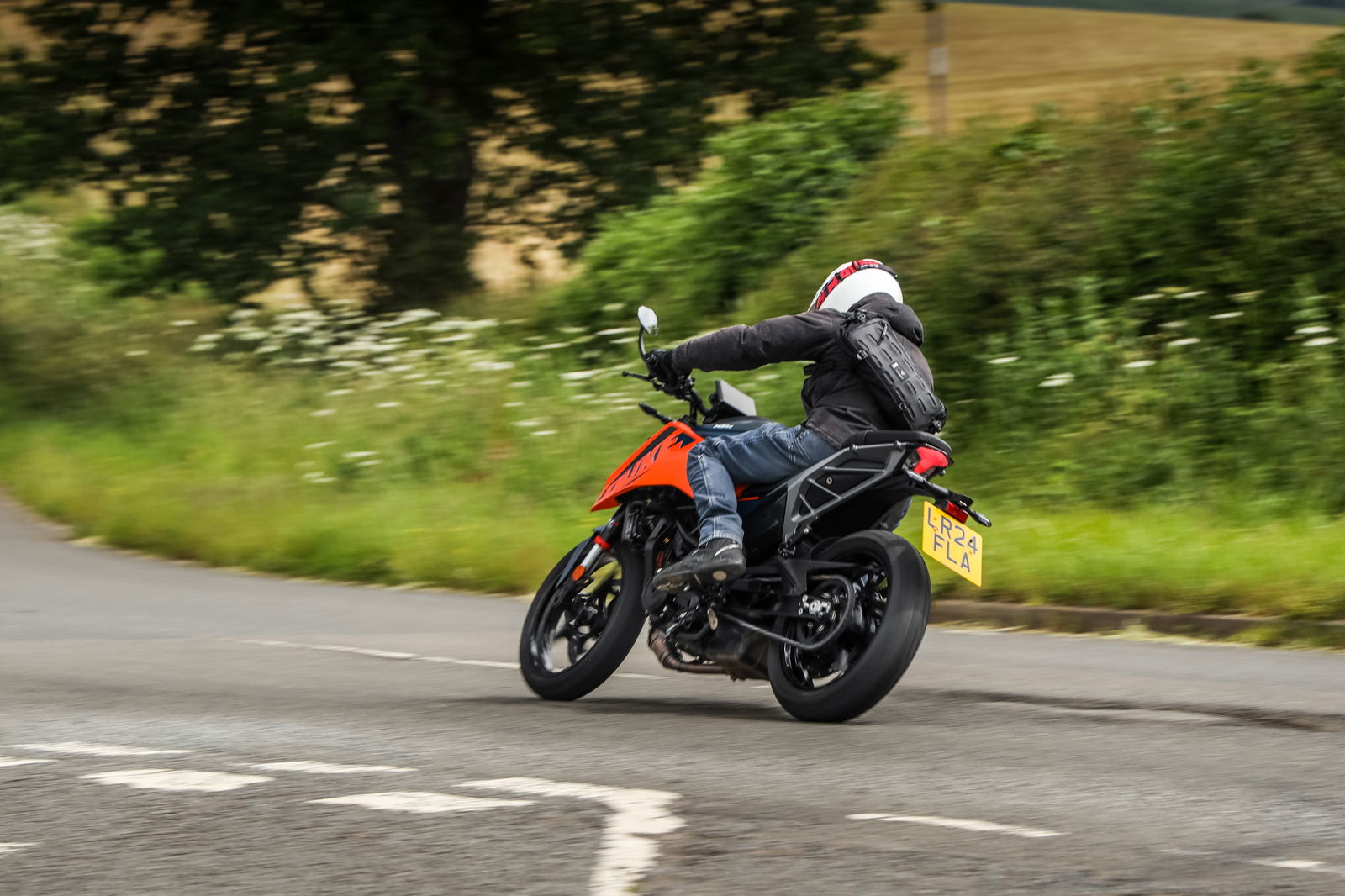
The Duke sits in a highly competitive segment, with manufacturers clamouring to be the first brand to entice a young rider onto two wheels. The main opposition to the KTM comes in the form of the Yamaha MT-125 (£5,103), the Kawasaki Z125 (£4,299), the Suzuki GSX-S125 (£4,499), the Honda CB125R (£4,699), and the Aprilia Tuono 125 (£4,400).
When gauged against the rest of the CBT-friendly pack, the £4,899 KTM seems like a slightly more expensive option, although you can’t argue against it when taking into account the high-spec chassis and the addition of the TFT, connectivity, and electronics on offer. Plus, KTM loves an offer, and at the time of writing it was possible to get one for a mere £3,999.
Should I buy the KTM 125 Duke?
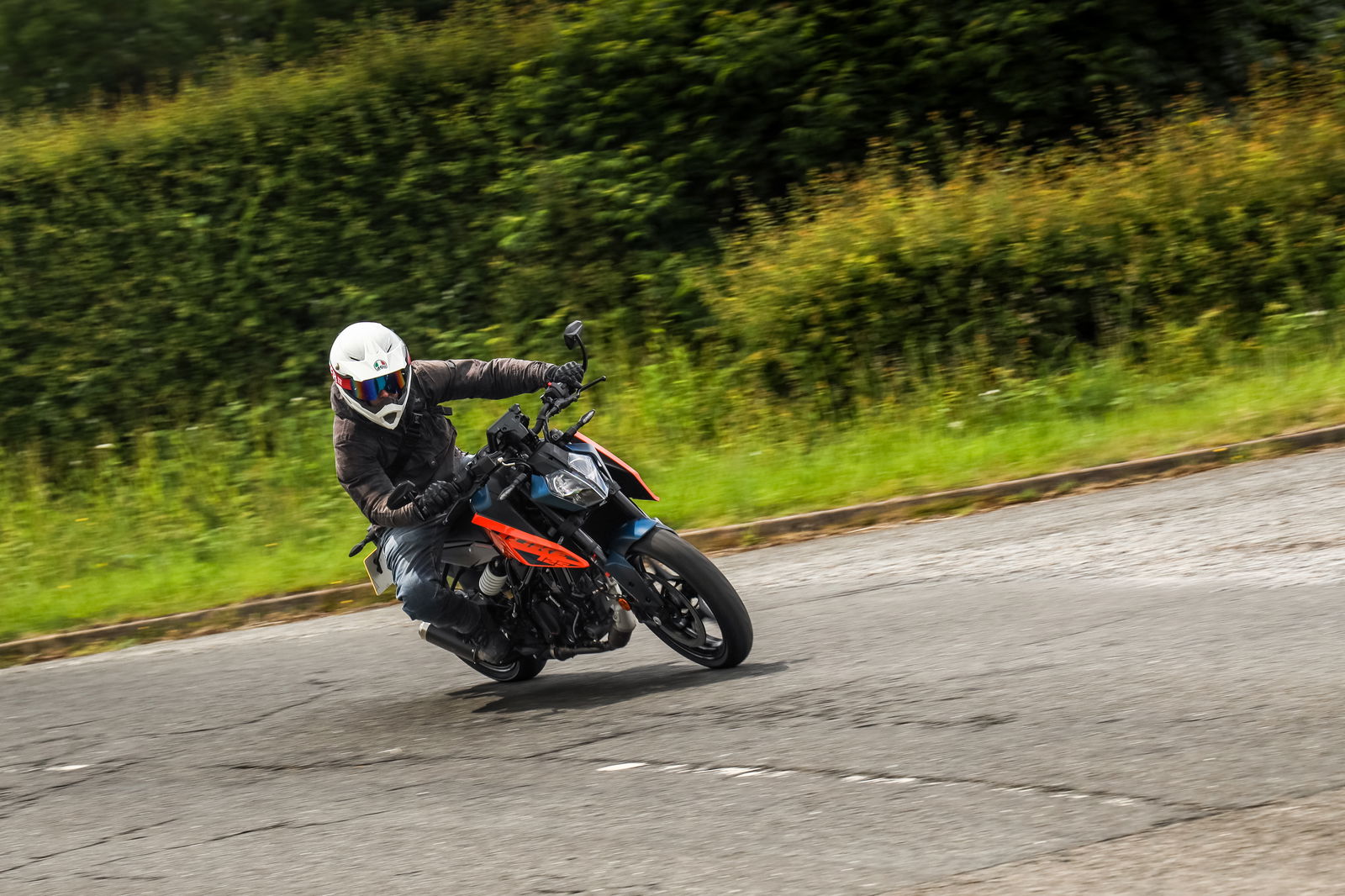
The latest edition of the learner legal Duke has again set the bar as to what a 125cc bike should be, just as the original machine did way back in 2010. It’s still just as easy to ride, graced with electronics and features that are normally reserved for more powerful and expensive bikes, and features styling that sets it apart from the rest of the bikes in the small-capacity class. More than that, though, it’s still a fairly affordable bike for new riders (or their parents), and with low-rate finance currently available on the 125 and 390 Dukes, the KTM club can be joined for under £100 per month on a PCP.
So to sum it up, if you’re looking for an entertaining and engaging bike, with fun features, a big-bike look and feel, and top-spec equipment, the 125 Duke is the bike you should be looking at, even if it does come in as a slightly more expensive proposition compared to the competition.
2024 KTM 125 Duke specs
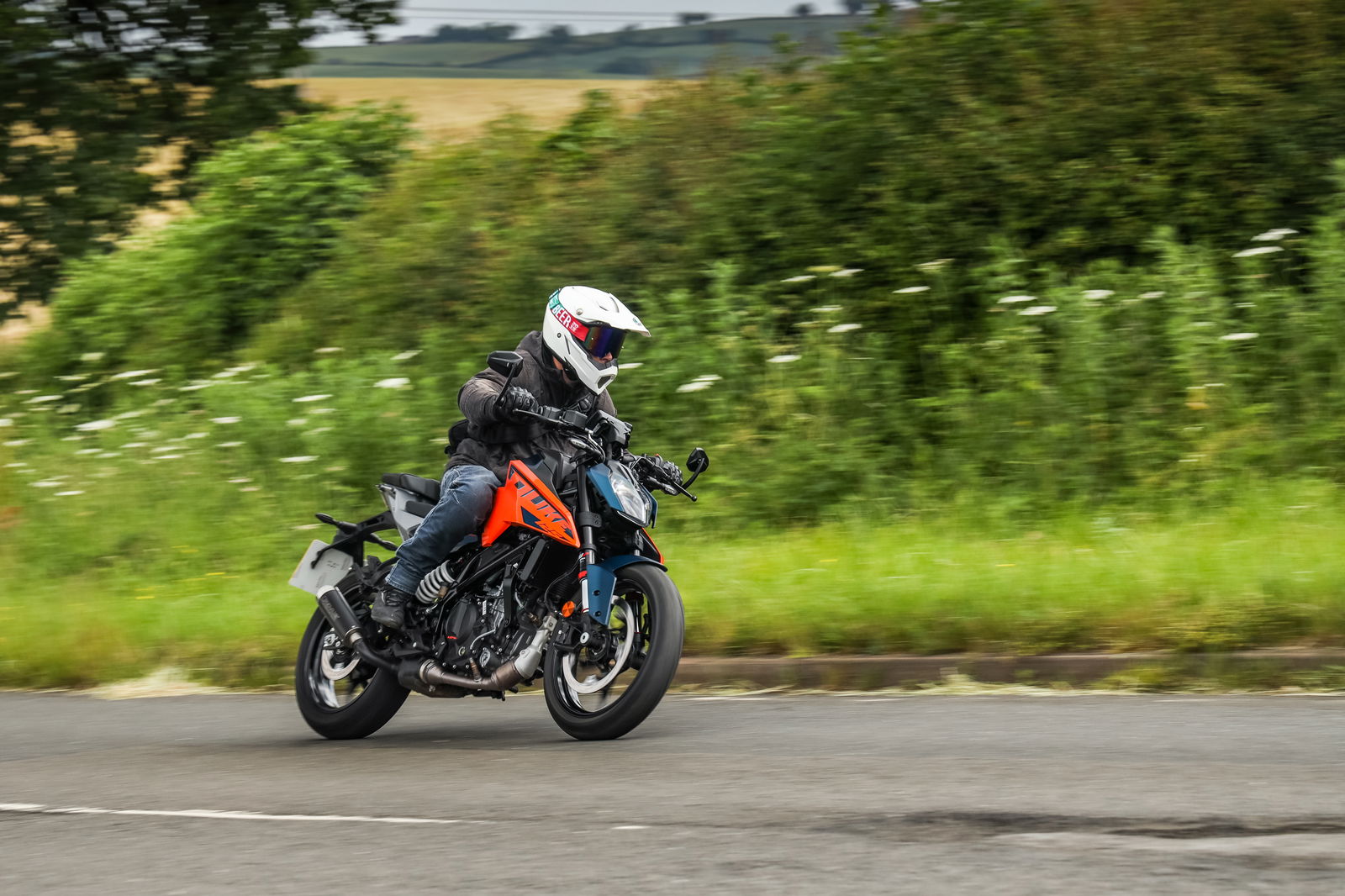
Capacity | 125cc |
Bore x Stroke | 58mm x 47.3mm |
Engine | 4-valve, liquid-cooled SOHC, fuel-injected Single-cylinder |
Power | 15bhp @ 10,000rpm |
Torque | 8.5lb/ft @ 7,750rpm |
Transmission | 6 speed, chain final drive, assist-and-slipper clutch, optional quickshifter |
Tank size | 13.4 litres |
Electronic equipment | Supermoto ABS, optional quickshifter, TFT (w/Bluetooth) |
Frame | Steel trellis with cast aluminium subframe |
Front suspension | 43mm USD WP APEX forks, 150mm travel |
Front suspension adjustment | none |
Rear suspension | WP APEX monoshock, 150m travel |
Rear suspension adjustment | Preload only |
Front brake | 320mm disc, four-piston ByBre caliper, ABS |
Rear brake | 240mm disc, two-piston ByBre caliper, switchable ABS |
Front wheel / tyre | Cast alloy wheel, 110/70 ZR17 Michelin Road 5 tyre |
Rear wheel / tyre | Cast alloy wheel, 150/60 ZR17 Michelin Road 5 tyre |
Wheelbase | 1357mm |
Seat height | 800mm |
Weight | 154Kg Wet |
